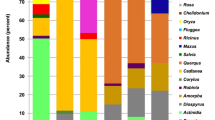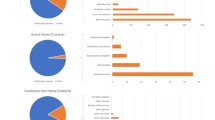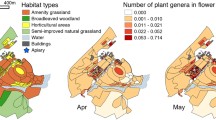Abstract
The invasive Vespa velutina has been widely referred as an effective predator of honeybees. Despite the potential risk to pollination services provision and honey production, there is no accurate quantification and assessment of its real consequences for honeybees. To date, the identification of the honeybee and other insects in the diet of V. velutina has been investigated by direct observation of adult foraging or examination of food pellets. To overcome these limitations, in this study we used a DNA metabarcoding approach to evaluate the usefulness of different types of sample (jaws and stomachs collected from workers and larval faecal pellets taken from the hornet comb) to investigate the predation of V. velutina upon honeybees, and potentially on other insects. Honeybee DNA was identified in all types of samples, but larval faecal pellets retrieved the higher number of reads of honeybee DNA and the largest diversity at all taxonomic levels. Over all samples we could identify 4 orders, 9 families, 6 genera and 1 species of prey. We estimate that collecting 6 workers is sufficient to identify honeybee predation by a colony using worker’s jaws. Stomachs were the least useful sample type to detect honeybee DNA. The presence of honeybee DNA in all analysed colonies irrespective of collection site, and the variety of insect orders detected in the diet support current concerns over the acknowledged negative impact of V. velutina on managed honeybees and its potential threat to pollination services provision.

Similar content being viewed by others
Data availability
Data with the total number of reads per sample with the respective identification are available on Supporting Information.
References
Alberdi A, Aizpurua O, Gilbert MTP, Bohmann K (2018) Scrutinizing key steps for reliable metabarcoding of environmental samples. Methods Ecol Evol 9:134–147. https://doi.org/10.1111/2041-210X.12849
Baldock, DW et al (2018) The bees of Portugal (Hymenoptera: Apoidea: Anthophila), Entomofauna. by M Schwarz (ed) Ansfelden, Austria, ISSN 0250-4413
Boyer F, Mercier C, Bonin A, Bras Y, Taberlet P, Coissac E (2016) Obitools: a unix-inspired software package for DNA metabarcoding. Mol Ecol Resour 16:176–182. https://doi.org/10.1111/1755-0998.12428
Cheng Y, Lin C (2016) Dietary niche partitioning of Euphaea formosa and Matrona cyanoptera (Odonata: Zygoptera) on the basis of DNA barcoding of larval feces. J Insect Sci 16(1):1–5. https://doi.org/10.1093/jisesa/iew060
Choi MB, Martin S, Lee JW (2012) Distribution, spread, and impact of the invasive hornet Vespa velutina in South Korea. J Asia-Pacific Entomol 15:473–477. https://doi.org/10.1016/j.aspen.2011.11.004
Clare E, Barber B, Sweeney B, Herbert P, Fenton M (2011) Eating local: influences of habitat on the diet of little brown bats (Myotis lucifugus). Mol Ecol 20:1772–1780. https://doi.org/10.1111/j.1365-294X.2011.05040.x
Deagle BE, Thomas AC, McInnes JC, Clarke LJ, Vesterinen EJ, Clare EL, Eveson JP (2019) Counting with DNA in metabarcoding studies: How should we convert sequence reads to dietary data? Mol Ecol 28(2):391–406. https://doi.org/10.1111/mec.14734
Egeter B, Bishop P, Robertson B (2015) Detecting frogs as prey in the diets of introduced mammals: a comparison between morphological and DNA-based diet analyses. Mol Ecol Resour 15:306–316. https://doi.org/10.1111/1755-0998.12309
Fournier A, Barbet-Massin M, Rome Q, Courchamp F (2017) Predicting species distribution combining multi-scale drivers. Global Ecol Conserv 12:215–226. https://doi.org/10.1016/j.gecco.2017.11.002
Garibaldi L, Steffan-Dewenter I, Winfree R, Klein A (2013) Wild pollinators enhance fruit set of crops regardless of honey bee abundance. Science. https://doi.org/10.1098/rspb.2006.3721
Hjorth-Andersen, M (2002) Catálogo de los Diptera de España, Portugal y Andorra (Insecta). Monogr Soc Entomol Aragon ISBN 84–932807–0–4. Available online at: http://sea-entomologia.org/PDF/MSEA08.pdf
Huson, DH et al (2016) MEGAN Community Edition - Interactive Exploration and Analysis of Large-Scale Microbiome Sequencing Data. PLoS Comput Biol 12(6), p e1004957. https://doi.org/10.1371/journal.pcbi.1004957
Hobson, KA et al (2018) Inferring origins of migrating insects using isoscapes: a case study using the true armyworm, Mythimna unipuncta, in North America. Ecol Entomol 43, pp 332–341. https://doi.org/10.1111/een.12505
IPBES (2019) Global assessment report on biodiversity and ecosystem services of the Intergovernmental Science-Policy Platform on Biodiversity and Ecosystem Services, ES Brondizio, J Settele, S Díaz, and HT Ngo (eds) IPBES secretariat, Bonn, Germany. ISBN No: 978-3-947851-13-3. Available online at: https://ipbes.net/global-assessment
Kamenova S, Mayer R, Rubbmark OR, Coissac E, Plantegenest M, Traugott M (2018) Comparing three types of dietary samples for prey DNA decay in an insect generalist predator. Mol Ecol Resour 18:966–973. https://doi.org/10.1111/1755-0998.12775
Lefort MC, Beggs JR, Glare TR, Doyle EJ, Saunders TE (2020) A molecular approach to studying Hymenoptera diets using wasps nests. NeoBiota 63:57–79. https://doi.org/10.1101/2020.04.06.024422
Lester PJ et al (2013) ‘The outlook for control of New Zealand’s most abundant, widespread and damaging invertebrate pests: social wasps. N. Z. Sci Rev 70(4), pp 56–62. Available online at: http://hdl.handle.net/2292/35313
Leza M, Herrera C, Marques A, Roca P, Sastre-serra J, Pons DG (2019) The impact of the invasive species Vespa velutina on honeybees: a new approach based on oxidative stress. Sci Total Environ 689:709–715. https://doi.org/10.1016/j.scitotenv.2019.06.511
Long BL, Kurta A Clemans DL (2013) Analysis of DNA from feces to identify prey of big brown bats (Eptesicus fuscus) caught in apple orchards. Am Midl Nat 170(2), pp. 287–297. https://doi.org/10.1674/0003-0031-170.2.287
Matsuura M, Yamane S (1990) Biology of the Vespine Wasps. Springer, Berlin, Germany
McInnes JC, Alderman R, Deagle BE, Lea MA, Raymond B, Jarman SN (2017) Optimised scat collection protocols for dietary DNA metabarcoding in vertebrates. Methods Ecol Evol 8(2):192–202. https://doi.org/10.1111/2041-210X.12677
Moller H (1996) Lessons for invasion theory from social insects. Biol Conserv 78:125–142
Monceau K, Thiery D (2017) Vespa velutina nest distribution at a local scale: an eight-year survey of the invasive honeybee predator. Insect Science 24:663–674. https://doi.org/10.1111/1744-7917.12331
Monceau K, Arca M, Lepêtre L, Bonnard O, Arnold G, Thiery D (2018) How Apis mellifera behaves with its invasive hornet predator Vespa velutina? Journal of Insect Behaviour. https://doi.org/10.1007/s10905-017-9658-5
Monceau K, Bonnard O, Thiéry D (2014) Vespa velutina: a new invasive predator of honeybees in Europe. J Pest Sci. https://doi.org/10.1007/s10340-013-0537-3
Monceau K, Maher N, Bonnard O, Thiéry D (2012) Predation pressure dynamics study of the recently introduced honeybee killer Vespa velutina: learning from the enemy. Apidologie. https://doi.org/10.1007/s13592-012-0172-7
Moran AJ, Prosser SWJ, Moran JA (2019) DNA metabarcoding allows non-invasive identification of arthropod prey provisioned to nestling Rufous hummingbirds (Selasphorus rufus). PeerJ. https://doi.org/10.7717/peerj.6596
Perrard A, Haxaire J, Rortais A, Villemant C (2009) Observations on the colony activity of the Asian hornet Vespa velutina Lepeletier 1836 (Hymenoptera: Vespidae: Vespinae) in France. Int J Entomol Annales de La Société Entomologique de France 45:119–127. https://doi.org/10.1080/00379271.2009.10697595
Piñol J, San Andrés V, Clare E, Mir G, Symondson O (2013) A pragmatic approach to the analysis of diets of generalist predators: the use of next-generation sequencing with no blocking probes. Mol Ecol Resour. https://doi.org/10.1111/1755-0998.12156
Poidatz J, Monceau K, Bonnard O, Thiéry D (2018) Activity rhythm and action range of workers of the invasive hornet predator of honeybees Vespa velutina, measured by radio frequency identification tags. Ecol Evol 8:7588–7598. https://doi.org/10.1002/ece3.4182
Requier F, Rome Q, Chiron G, Decante D, Marion S, Ménard M, Henry M (2019) Predating Asian hornet affects foraging activity and survival of Western European honeybees. J Pest Sci. https://doi.org/10.1007/s10340-018-1063-0
Rojas-Nossa SV, Calviño-Cancela M (2020) The invasive hornet Vespa velutina affects pollination of a wild plant through changes in abundance and behaviour of floral visitors. Biol Invasions 22(8):2609–2618. https://doi.org/10.1007/s10530-020-02275-9
Rome Q, Muller F, Touret–Alby A, Darrouzet E, Perrard A, Villemant C (2015) Caste differentiation and seasonal changes in Vespa velutina (Hym.:Vespidae) colonies in its introduced range. J Appl Entomol 139:771–782. https://doi.org/10.1111/jen.12210
Rome Q, Perrard A, Muller F, Fontaine C, Quilès A, Zuccon D, Villemant C (2021) Not just honeybees: predatory habits of Vespa velutina (Hymenoptera: Vespidae) in France. Annales de La Société Entomologique de France (N.S.) 57:1–11. https://doi.org/10.1080/00379271.2020.1867005
Stireman JO, O’Hara JE, Wood DM (2006) Tachinidae: evolution, behavior, and ecology. Annu Rev Entomol 51:525–555. https://doi.org/10.1146/annurev.ento.51.110104.151133
Turchi L, Derijard B (2018) Options for the biological and physical control of Vespa velutina nigrithorax (Hym.: Vespidae) in Europe: a review. J Appl Entomol 142:553–562. https://doi.org/10.1111/jen.12515
Vestheim H, Jarman SN (2008) Blocking primers to enhance PCR amplification of rare sequences in mixed samples–a case study on prey DNA in Antarctic krill stomachs. Front Zool 5(12):1–11. https://doi.org/10.1186/1742-9994-5-12
Vestheim H, Deagle BE, Jarman SN (2011) Application of Blocking Oligonucleotides to Improve Signal-to-Noise Ratio in a PCR. In: Park D. (eds) PCR Protocols. Methods in Molecular Biology (Methods and Protocols), vol 687. Humana Press. https://doi.org/10.1007/978-1-60761-944-4_19
Villemant C, Muller F, Haubois S, Perrard A, Darrouzet E, Rome Q (2011) Bilan des travaux (MNHN et IRBI) sur l’invasion en France de Vespa velutina, le frelon asiatique pre´dateur d’abeilles In: Barbançon J-M, L’Hostis M (eds) Proceedings of the Journe´e Scientifique Apicole, Arles. ONIRIS-FNOSAD, Nantes, 11 February 2011, pp 3–12
Zeale MRK, Butlin RK, Barker GLA, Lees DC, Jones G (2011) Taxon-specific PCR for DNA barcoding arthropod prey in bat faeces. Mol Ecol Resour 11:236–244. https://doi.org/10.1111/j.1755-0998.2010.02920.x
Zhang Z, Schwartz S, Wagner L, Miller W (2000) A greedy algorithm for aligning DNA sequences. J Comput Biol 7(1–2):203–214. https://doi.org/10.1089/10665270050081478
Acknowledgements
We would like to thank Nativa association and to Graça Oliveira, for the help provided in sample collection. We are grateful to Diana Castro for laboratory assistance, and to Bastian Egeter and Pedro Silva for the helpful suggestions in the bioinformatics pipeline.
Funding
Fundação para a Ciência e a Tecnologia (FCT Portugal) provided financial support through the project UIDB/00329/2020 granted to cE3c. M.J.V (PD/BD/128351/2017), R.G. and H.R. (contract under DL/2016), R.G.R (CEECIND/01087/2018) and L.G.C. (LISBOA-01–0145-FEDER-028360/EUCLIPO) were funded by Fundação para a Ciência e a Tecnologia (FCT). L.G.C. was also funded by the Brazilian National Council for Scientific and Technological Development (CNPq. Universal 421668/2018–0; PQ 305157/2018–3). Laboratory work was supported by PTDC/BIA-ECO/31731/2017. The funding sources had no direct involvement in the study design, or in the collection, analysis, and interpretation of data.
Author information
Authors and Affiliations
Corresponding author
Ethics declarations
Conflict of interest
All authors declare that there is no conflict of interest.
Consent for publication
The authors declare that they consent to the publication.
Additional information
Communicated by Jay Rosenheim.
Publisher's Note
Springer Nature remains neutral with regard to jurisdictional claims in published maps and institutional affiliations.
Supplementary Information
Below is the link to the electronic supplementary material.
Rights and permissions
About this article
Cite this article
Verdasca, M.J., Godinho, R., Rocha, R.G. et al. A metabarcoding tool to detect predation of the honeybee Apis mellifera and other wild insects by the invasive Vespa velutina. J Pest Sci 95, 997–1007 (2022). https://doi.org/10.1007/s10340-021-01401-3
Received:
Revised:
Accepted:
Published:
Issue Date:
DOI: https://doi.org/10.1007/s10340-021-01401-3




